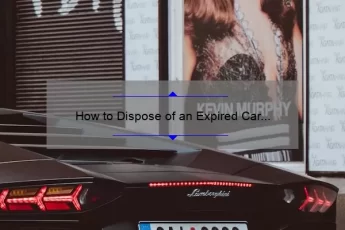There are several things you should keep in mind before beginning to dyno tune a stock vehicle. First, the car must be mechanically sound. Check for problems, such as sticking blowoff valves and aftermarket catch cans. Ensure that the car is properly plumbed and emptied before tuning.
Removing a rev limiter
Removing a stock car’s rev limiter allows you to make some changes to the engine. You can change the feel of the throttle pedal. You can choose to make it softer or harder. You can also increase the car’s performance by adjusting the engine’s dyno settings.
Firstly, you need to select the entire table and input a higher RPM than what the stock motor will allow. For example, if you’ve disabled the MPH limiting, you can input 99 mph instead. However, this doesn’t mean that the car will actually hit 99 mph. Instead, it will only go as fast as it can under its own power.
Another option is to use an aftermarket rev limiter. Usually, this is an inexpensive method that can give you the desired results. You will need to find a professional who can remove the RPM limiter safely. BTF has a team of engineers that can help you get the best out of your car.
After you remove the rev limiter, you can now make some changes to the car’s power and torque maps. This is an excellent way to increase a stock car’s top speed. You can get as high as 155 mph, depending on your car model.
A stock car can have either a soft or hard rev limiter. A soft limiter is easier on the engine’s drivetrain and puts less stress on its components. A hard limiter, on the other hand, cuts the engine when the rev limiter reaches a certain point. This option is better suited for flat-out racing, while a forced soft limiter is better for daily driving.
Having a slightly richer air/fuel ratio will give you the best results. A richer fuel mix will produce more horsepower. However, you must be careful not to make your car overly rich. This will make the car less gas-efficient and cause it to have an increased check engine light.
Identifying performance goals
Before tuning a stock car, it is important to determine your desired performance goals. Depending on your goals, you can tweak the power, weight distribution, and handling of your vehicle. You can experiment with tuning in small increments to find the ideal setting. It is important to keep in mind that the best tuning results will depend on your car’s relationship with the driver.
Preparing your car for a dyno session
You can improve the quality of your calibration results by ensuring that your engine is healthy. The best way to do this is to ensure that all of your belts and hoses are in good shape. In this way, you will reduce the likelihood of a hose or belt busting, or even popping.
You should also make sure that your fuel system is up to the task of supplying enough air to the engine. You don’t want any part of your engine to interfere with the process of making power. If you want to ensure that your car’s dyno session goes smoothly, you should prepare your car ahead of time.
Before the dyno session, check your engine’s oil and fuel. Dynos can be expensive and even the smallest leak can result in a failed run. Also, check for any engine codes to ensure that everything is working properly. You may even want to take an extra tank of fuel if your vehicle is designed to make more power.
Your tires are another important factor to check. Since they’ll be subjected to high speeds and loads, they need to be in excellent condition. The tires must be properly inflated and have enough tread to keep them on the car for as long as possible. If your tires are too old, consider getting new ones.
You should also bring a wheel lock key. You’ll need to have one of these keys for your dyno session. If you don’t have one, it’s a good idea to obtain one before your appointment. The wheel lock key is needed to put your car on the dyno.
Before you go to the dyno, you should make sure that the car has all of the necessary fluids and parts. You should also ensure that the engine is running smoothly. A dyno session can be a hard test for your engine. Be sure to check the car’s hoses and belts for damage. Besides, the tires must be in good condition so that they can run smoothly on the rollers.
A dyno session is an excellent opportunity for you to fine-tune your vehicle’s performance. You can see how much more power your car has before and after the session and find out where you need to make some changes.
Identifying common issues
When it comes to dyno tuning a stock vehicle, you need to be aware of common mistakes that can ruin your car’s performance. First, you need to have the right equipment. You should check the temperature and the elevation of your dyno. It is important to check these things so that you can accurately compare results from different runs. Also, be sure that the dyno tank is at least 1/4 full of pure 91 octane.
Then, you need to use a good scanner. You can use the OEM scanners, but they are inaccurate and slow. Also, you need a consistent sensor for the AF ratio. You must also know the temperature range of your engine.
Dyno tuning a stock vehicle can increase performance and efficiency. By adjusting the engine’s output, you can increase power and torque. Dyno tuning your vehicle can make the ride more comfortable and smoother. However, be cautious and only use a certified tuning facility.
Dyno tuning a stock car involves using dyno equipment calibrated to match the manufacturer’s calibration. This can cause problems, such as dyno operators not being aware that their sensors may not be in the correct AFR range. A proper calibration is important for your car’s safety and efficiency.
Another common issue that can arise when dyno tuning a car is turbulent air flow. This can affect the mass air meter and underhood air filter, which will change the readings. Additionally, a rotating mass air meter will affect the accuracy of dyno calibration. Using a filter shield does not solve this issue.
The dyno tuning process will allow you to optimize the power output of your vehicle and improve its fuel economy. It will help you fix common car problems such as low gas mileage, surging and pinging. You will also be able to maximize the lifespan of your engine if you tune it properly.
While you are working on your car’s performance, the best way to make sure it is tuned correctly is to ensure that it is free of corrosion. Another issue you must watch out for is leaks. If you have oil leaks, you should not perform dyno tuning unless you can fix them. If they are not too severe, you will need to remove the valve cover, check the coils and spark plugs.








